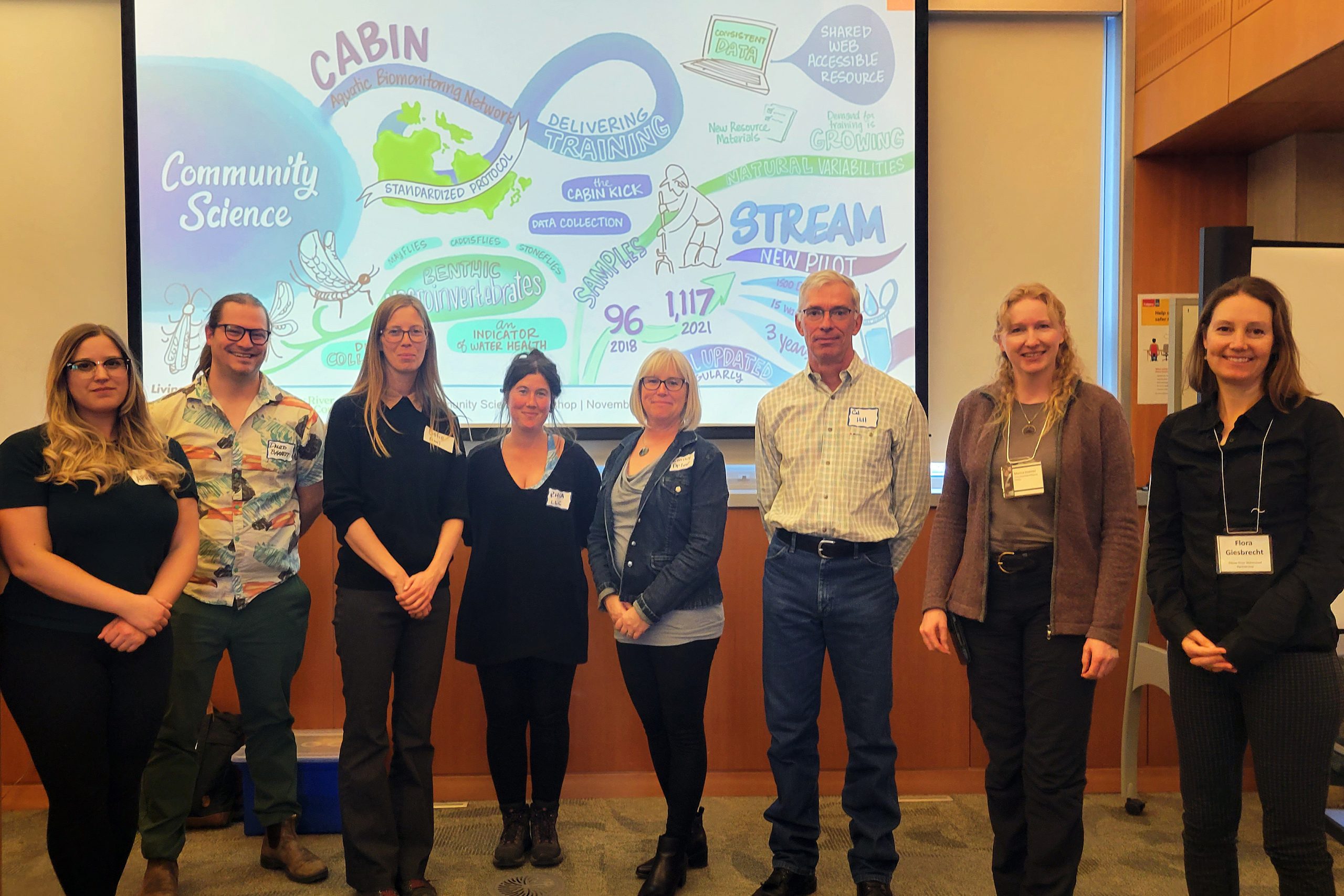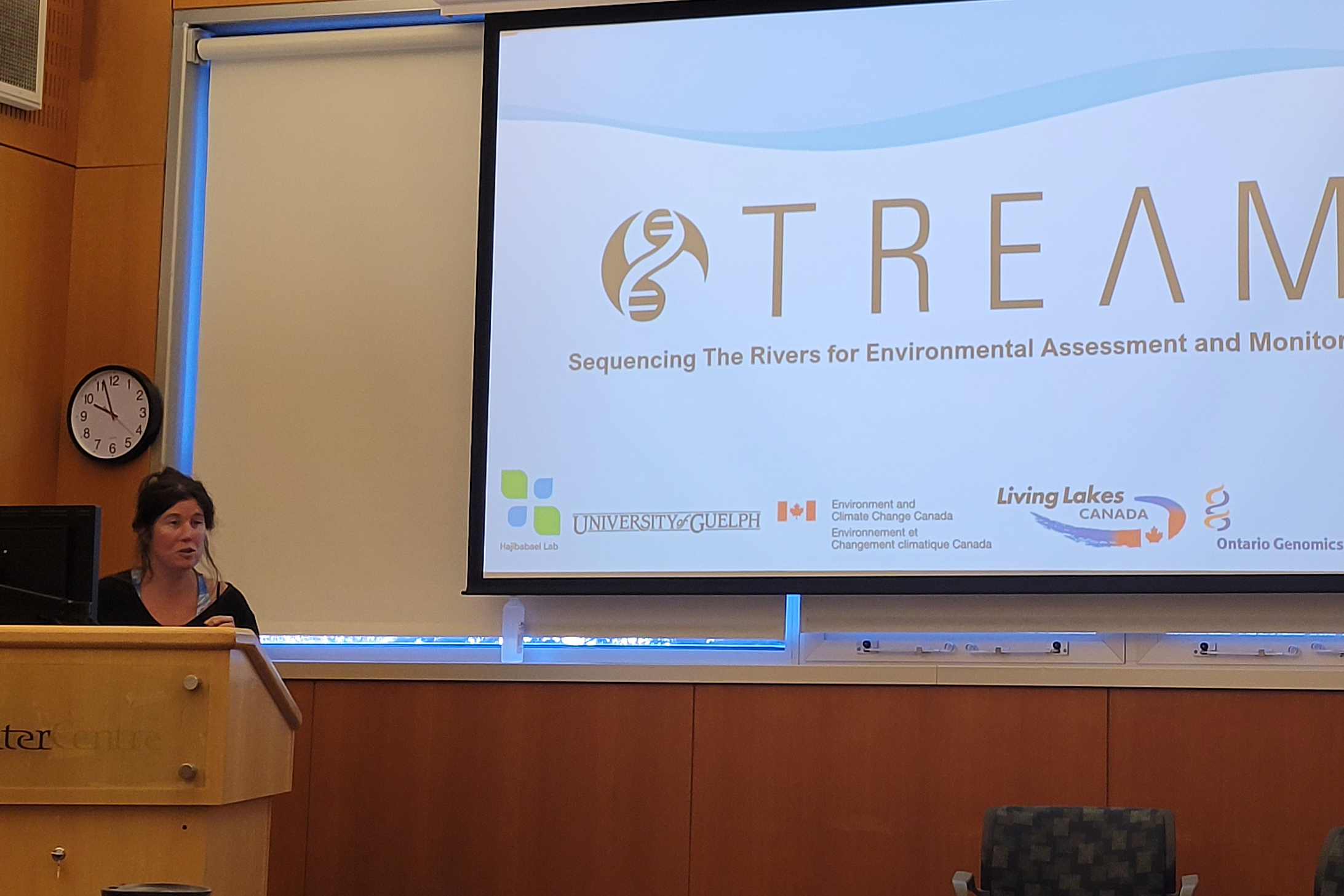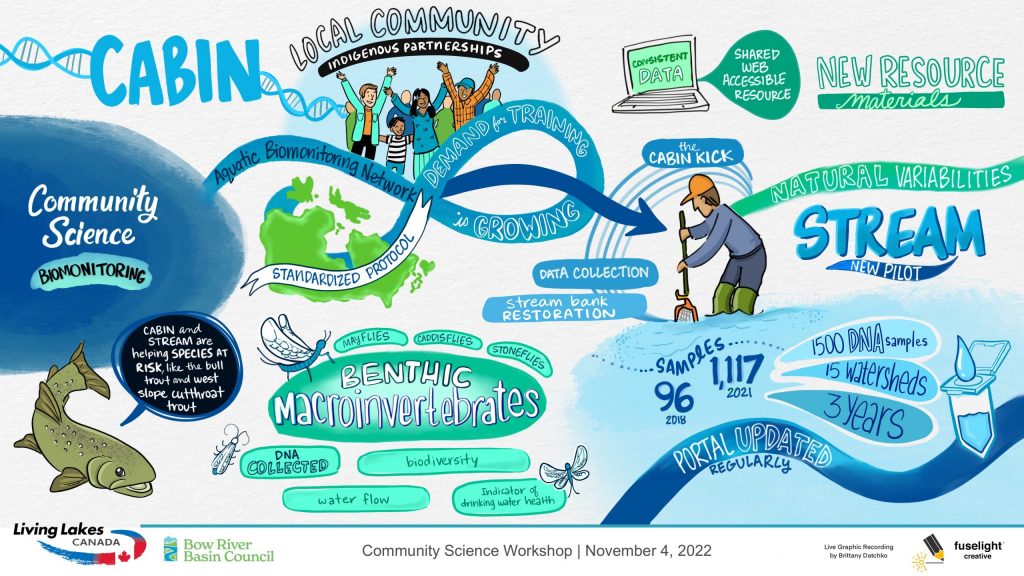Wading into water concerns in the Bow Basin

Biomonitoring in the Bow presenters, from left to right: Aphra Sutherland and David Barrett, the University of Calgary; Sofie Forsström, Oldman Watershed Council; Rhia MacKenzie, Living Lakes Canada; Emily McIvor, Environment and Climate Change Canada; Cal Hill and Marina Krainer, Ghost Watershed Alliance Society; and Flora Giesbrecht, Elbow River Watershed Partnership. LLC Photo
If you’ve ever seen someone in hip waders shuffling their boots and swirling a net through shallow river waters, chances are you’ve seen biomonitoring in action. Simply put, biomonitoring is looking at life in rivers and streams to better understand their health. With increasing land use pressures in Alberta’s front ranges, the need for biomonitoring is on the rise.
At a recent Biomonitoring in the Bow workshop hosted in Calgary by the Bow River Basin Council (BRBC) and Living Lakes Canada, the potential threats to local watersheds and opportunities to deepen watershed knowledge were explored.
The BRBC is a multi-stakeholder charitable organization working toward promoting balanced solutions for a healthy watershed. The Science Committee is one of five volunteer committees working toward this goal and this event was the second in a series of Community/Citizen Science Workshops planned by the BRBC Science Committee volunteers.
As commented by Wendell Koning, Science Committee Co-Chair, “Our main goals were to provide a forum for the community to reconnect with one another and to allow for practical questions to be answered about biomonitoring… we were really pleased with the outcome of the workshop.”

Participants pose with their kick-nets during a biomonitoring training led by Living Lakes Canada in Canmore with the Ghost Watershed Alliance Society. LLC Photo
Watersheds throughout the Rocky Mountains’ eastern slopes face a myriad of potential negative impacts as a result of various land uses. Originating from mountain glaciers, water travels through diverse landscapes. This includes municipalities, agricultural lands, recreational areas, and resource exploratory and extractive activities. Since every person living in these watersheds depends on clean water, land use pressures must be monitored utilizing the best practices grounded in science. This is where biomonitoring comes into the picture.
Through the collection and identification of aquatic macroinvertebrates — small bugs without a backbone living in water — biomonitoring can tell us how healthy the waterway is. Biomonitoring can detect declining water quality. It can alert us to the presence of invasive species and detrimental pathogens such as whirling disease that has infected some trout and whitefish populations in Alberta
Co-host Living Lakes Canada is an award-winning water stewardship NGO based in the B.C. Columbia Basin. Alongside the Oldman Watershed Council, Living Lakes is a founding member of the Eastern Slopes Collaborative, which is working to develop a community-based water monitoring network for the region and support local water monitors.

Rhia MacKenzie, Living Lakes Canada Biomonitoring Program Coordinator. LLC Photo
“It was wonderful to co-host this event with BRBC and see so many enthusiastic water stewards and volunteers,” said Rhia MacKenzie, Biomonitoring Program Coordinator with Living Lakes Canada. “Moving forward, we’re excited to keep strengthening and working together with our partners to protect Alberta’s waterways.”
The key to successful biomonitoring is collaboration between organizations and with local communities. Collaboration facilitates sharing of expertise and resources, and helps to educate and empower citizens to care for the freshwater they rely on. The Biomonitoring in the Bow workshop is “a great example of the kind of successes the organization has when the community comes together to collaborate,” said Mike Murray, BRBC Executive Director.
Workshop presenters included Environment and Climate Change Canada, the Oldman Watershed Council, Ghost Watershed Alliance Society, Elbow River Watershed Partnership and the University of Calgary. A special thank you also goes out to the City of Calgary for providing the space for this event in the City of Calgary Water Centre.
A time lapse video of the graphic recording from the Biomonitoring in the Bow workshop was provided by Fuselight Creative.

A visual graphic recording of the Biomonitoring in the Bow Workshop. Graphic by Fuselight Creative





